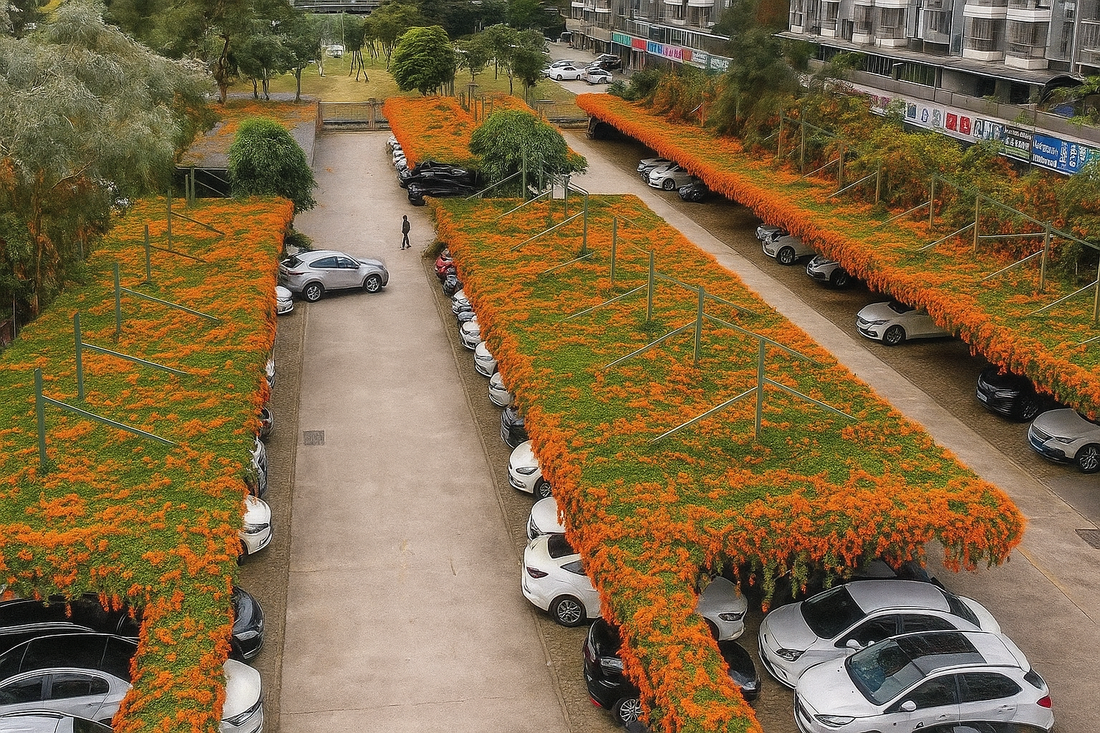In Nanning, China, parking lots are blooming. Rows of cars sit under trellises covered in orange bougainvillea and other vibrant plants and green vines—living roofs that turn an ordinary lot into something closer to a park.
These floating gardens do more than look good - the benefits stack up quickly.
Most importantly, plants reduce carbon dioxide. This is KEY for fighting climate change and reducing greenhouse gases.
Plants also reduce pollutants, release oxygen, and lower temperatures, easing the urban heat island effect.
Rainwater is absorbed rather than funnelled into overburdened drains, helping to prevent flooding.
Last but not least, orange bougainvillea plants provide nectar and shelter for pollinators like bees, butterflies, and hummingbirds that keep our ecosystems alive, while residents enjoy the aesthetics of gardens in bloom.
It’s a simple idea with big results: instead of treating parking as a blank slab of asphalt, Nanning treats it as part of the city’s living fabric. Beauty becomes infrastructure, and infrastructure becomes habitat.
Imagine if every lot in every city looked like this—colorful, shaded, alive. A small change in how we build could ripple into fewer greenhouse gasses, cooler cities, and healthier pollinator populations everywhere.
Proof that even a parking lot can be a #WinForThePlanet.
PS - If you want an easy way to reduce your plastic use and carbon footprint, check out Weightless Sheets.

